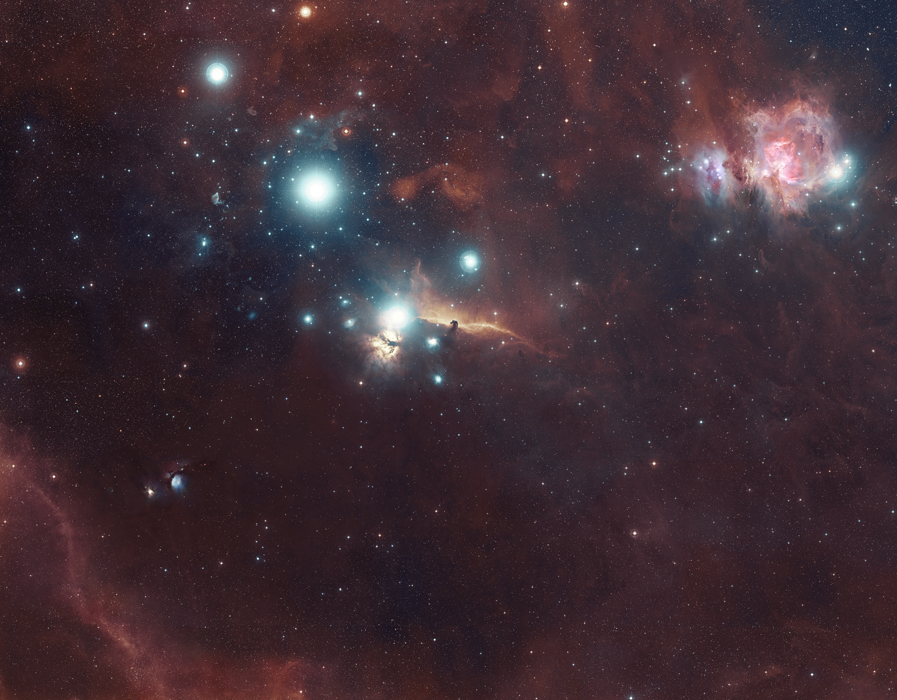Time Travel Research Center © 2005 Cetin BAL - GSM: +90 05366063183 - Turkey / Denizli
An Orion Mosaic from POSS2 data

Please click here
or on image for a medium-sized image (2.4 MB).
Highest Resolution View
(7.4 MB): Please wait for full download before viewing.
Acknowledgment:
Raw data from
POSS2 made possible through the Digitized Sky Survey. Other images and
information about POSS2 may be found here. The M42 region was overexposed
in POSS2 data. To solve this problem, I created a composite using my prior
image of the Great Nebula from last year.
Characteristics:
Size: about 8 degrees FOV
Distance: 1600 light years (Horsehead Nebula, aka B33); 826 light years (Alnitak-
Zeta Orionis); 1165 light years (Sigma Orionis)
RA: 5h 40m 56s
Dec: -1 degrees 56' 21"
Description:
This represents a 198 subframe mosaic that I assembled over
a 2 week period using data from POSS2, as well as a composite with my prior
Great Nebula image. I downloaded each subframe (60' x 60' each) and
constructed the mosaic in Photoshop, with intermittent use of Registar as
needed. Data from the red and blue plates were comprised of 99 subframes
each, resulting in a total of 198 individual frames to construct. I
assembled the red and blue mosaics separately, followed by combining with my
Bicolor Processing technique to produce the final color image. There were
rare regions of the POSS2 subframes that contained small gaps in the data,
especially in the blue, or contained shadows of what appeared to be the
secondary mirror. I needed to "patch" these, usually by obtaining an
overlapping subframe that was slightly shifted in RA and DEC. The highest
resolution image contains striking detail and reveals many beautiful
reflection regions that tend to go unnoticed compared to their more famous
neighbors like the Horsehead, M42, and M78.